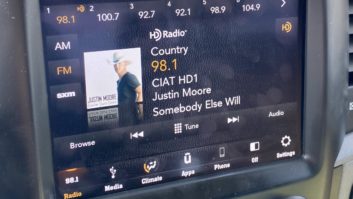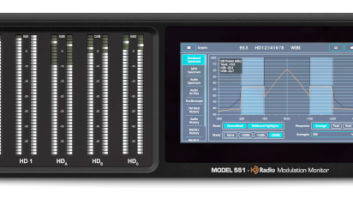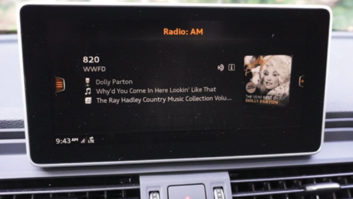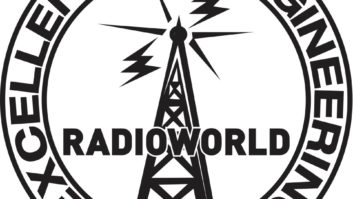When I first put an IBOC radio transmitter on the air (almost six years ago) there weren’t many good choices in monitor receivers. There were plenty of radios that would pick up the IBOC signals, but none could really be relied upon in the way that we were accustomed to with analog modulation monitors. Fortunately since then, both known and not so well known manufacturers have developed new monitors. These IBOC monitors make great analog FM monitors too, so that’s an additional benefit. Here’s a look at what’s out there.
The company with the longest history in making modulation monitors for broadcast has to be Belar Electronics. Its IBOC monitor is the FMHD-1. Some of its most important features are:
- Frequency agility
- Off-air reception or high-level inputs available
- Metering of IBOC L, R, L+R and L-R
- Metering of analog L, R, L+R, L-R, pilot, and total mod
- Time and level alignment (analog vs. IBOC audio)
- Spectrum analysis
- SIS and PSD data
- IBOC status and control information
- Bit error rate measurement
- Four user-assignable alarm outputs (via relays)
The FMHD-1 actually has two high-level RF inputs available, so if it is installed at the transmitter site using separate transmitters for analog and IBOC, the RF signals can be combined within the meter itself. It also has two modes of communication available: Ethernet and RS-232. In either case, Belar’s GUI — WizWin — must be installed to access the unit. The monitor also contains two IBOC decoders; so two streams can be decoded simultaneously.
The FMHD-1 is 2RU and has a 640X240 LCD color display on the front panel along with a rotary encoder wheel used to control and configure the unit.
I want to point out two of the displays that I think are most useful to those that transmit IBOC signals. The first (Figure 1) is the time and level alignment.
This visual representation is handy primarily because a lot of information is gathered all in one spot. Note though that the range on the delay is +/-372ms, so before you got to this screen, you would need to rough-in the time delay to something much less. Based on my experience, time delay needs to be checked fairly frequently.

PSD also needs to be checked regularly. The FMHD-1 has a display to help with that (Figure 2).
And I mentioned that the newer IBOC monitors have useful features for the analog transmission as well. Figure 3 shows the display for analog levels.

Of course on the legacy analog meters, you can select the desired parameter to monitor and show the results one at a time via pushbutton. Having a visual display such as this is quite useful.

Multiple monitoring

Now if you have a cluster of stations in your market (and thus many IBOC streams) you may want to consider a different tack with respect to monitoring the digital transmissions such as Audemat’s GoldenEagle HD. The company makes one for AM and one for FM, but we’ll consider just the FM one in this case. Their operation is similar.
The GoldenEagle is definitely meant to go at a studio location. The primary means of communication with the unit is via IP. Here are some of its salient features:
- Can be configured to scan and monitor up to 10 different stations
- Can be configured to generate alarms based on attributes such as low RF level, low modulation level, excessive time differential (analog vs. IBOC)
- Alarms can be sent via SMTP
- Spectrum analysis (optional)
- Supports SNMP, thus the unit can be queried by any SNMP manager
- Will stream analog and digital streams
- Real-time measurements of PSD, SIS, time delay

Again, the GoldenEagle HD is really designed to monitor multiple stations and would be ideal for an operation needing to monitor a geographically large area. From one central location, any number of GoldenEagle HD units receiving stations in a statewide network (for example) could be monitored via IP on a real-time, proactive basis. (In other words, you log in to a unit and listen to any station via the unit’s audio streaming capability.) Alternatively, they could be monitored 24/7/365, in the background, via SNMP. (Want to know more about SNMP? See the March 2011 Trends in Technology article.)To configure the Goldeneagle, use Audemat’s GUI. Following are some of the more common pages used to monitor IBOC stations. Figure 4 shows one particular view where you can see among the tabs along the top that I’ve picked AM/FM HD Radio and the tabs near the lower left that I’ve selected PSD. Note the title and artist are shown. (When transmitting PSD data with digital streams this is something you will need to look at occasionally.) In Figure 5, I’ve moved one tab over to alignment, which will also need to be viewed periodically. There are two speeds at which you can measure the time delay. If you can rough the time delay in to what you think is less than 300ms, then you use short. If not, then you use long.
Again, the GoldenEagle HD is really designed to monitor multiple stations and would be ideal for an operation needing to monitor a geographically large area. From one central location, any number of GoldenEagle HD units receiving stations in a statewide network (for example) could be monitored via IP on a real-time, proactive basis. (In other words, you log in to a unit and listen to any station via the unit’s audio streaming capability.) Alternatively, they could be monitored 24/7/365, in the background, via SNMP. (Want to know more about SNMP? See the March 2011 Trends in Technology article.)To configure the Goldeneagle, use Audemat’s GUI. Following are some of the more common pages used to monitor IBOC stations. Figure 4 shows one particular view where you can see among the tabs along the top that I’ve picked AM/FM HD Radio and the tabs near the lower left that I’ve selected PSD. Note the title and artist are shown. (When transmitting PSD data with digital streams this is something you will need to look at occasionally.) In Figure 5, I’ve moved one tab over to alignment, which will also need to be viewed periodically. There are two speeds at which you can measure the time delay. If you can rough the time delay in to what you think is less than 300ms, then you use short. If not, then you use long.
The GoldenEagle also offers streaming audio capability. From Figure 6 you can see (again going across the top of the display) that I’ve selected the audio streaming tab. You can compare analog vs. digital (handy for roughing in the time delay) or you can listen to analog only, or the digital streams (up to eight).

Seize the day
DaySequerra offers the M2.2R IBOC receiver/monitor. This 2RU device has both a high-level RF input and an antenna input. Some of its key features are:
- thatFrequency-agile, covers both AM and FM bands
- Monitoring of analog components including pilot level, SCA level
- Composite outputs, full-time digital output
- RDS and multipath display
- Digital-to-analog time, level, phase alignment
- PSD for up to eight digital streams
- Performance loss module with six alarm relay outputs
- Ethernet interface, remote dashboard software with fault indications via visual display and email
- Scans up to 100 preset channelsFigure 7 shows the remote dashboard.

I’ve mentioned several times that it’s (unfortunately) necessary to check the time alignment between the analog and digital streams for the MPS quite frequently. DaySequerra offers the M2DDM to solve this problem. This unit corrects time delay aberrations automatically in the background. There are several versions.The single-station version includes internal digital delay. It is designed to be installed at a transmitter site. The multiple-station version sends real-time correction information via IP to embedded exporters. It is designed to be installed at a common receive location. The full remote-control version with the M2DDM dashboard can be accessed via IP. It also includes user-programmable, optically isolated alarm outputs that can correspond to loss of analog carrier, OFDM carriers and program silence, audio streaming available via IP, and it can send alarms outbound via email or text message.

Figure 8 is a block-diagram of the intended installation method at a transmitter site (single-station version).More basic needsThe Inovonics INOmini 632 is an FM analog and HD Radio receiver for off-air broadcast monitoring capable of decoding up to HD8 multicasts. Analog and HD Radio digital programs are both accompanied by digitized text and housekeeping data including FM RDS, RT+ tagging data and IBOC PSD, which are shown on the front-panel LCD display.When the 632 is set to receive IBOC it does not automatically revert to analog reception if the digital signal is lost. A jog wheel navigates the receiver’s menu tree. Analog and AES audio provided with rear-panel tallies for carrier loss, digital program loss and analog audio loss.

Perhaps all you want is a monitor to pick up digital transmissions, sending the audio to all the normal places. In that case, consider the Sangean HDT-1X. Clearly it doesn’t have all the bells and whistles of the monitors I’ve mentioned so far, but it does have the following useful features:
- AM and FM tuner with antenna inputs for both bands; 20 presets per band
- Split audio mode (digital audio left channel, analog audio right channel)
- Forced analog mode
- Displays PSD for digital transmissions, RDS for FM
- Displays data rate, service mode, signal quality, signal strength
Obviously you could tack on your own widgets to the audio outputs of this device so that you can be made aware of loss of digital audio, at the very least.Receiver and modulation monitor manufacturers have caught up to us now, and it’s far easier to build an IBOC monitoring system than it was five years ago. Obviously all the new features available with the digital transmission scheme we’re using necessitate even more complexity in the monitoring arrangements. The good news is that the new technology seen in the products I’ve discussed also have positive benefits for monitoring our legacy transmission methods as well.Compare the features of the monitors listed here in this handy PDF.
Irwin is transmission systems supervisor for Clear Channel NYC and chief engineer of WKTU, New York. Contact him at [email protected].












